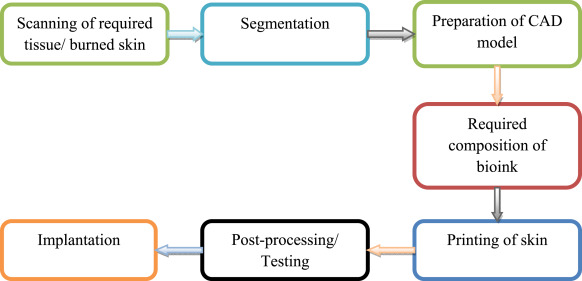
Revolutionary 3D-Printed Synthetic Skin Could Eliminate Animal Testing in the Cosmetics Sector
In a significant scientific breakthrough, researchers from Graz University of Technology (TU Graz) in Austria and the Vellore Institute of Technology (VIT) in India have pioneered an innovative 3D bioprinting method that produces skin replicas infused with living cells. This development presents a promising and ethical substitute to animal testing in cosmetic and dermatological studies.
The Technology Underpinning the Skin
This cutting-edge method utilizes high-accuracy 3D printing integrated with specially formulated hydrogels—substances that are mainly composed of water yet offer the required stability and texture to sustain living tissues. The synthetic skin created closely resembles the natural three-layered architecture and biomechanics of human skin, facilitating realistic assessments of how the skin may respond to various substances.
“These hydrogels must accomplish more than simply maintain their form,” states Karin Stana Kleinschek from the Institute of Chemistry and Technology of Biobased Systems at TU Graz. “They need to positively engage with skin cells—promoting their growth, proliferation, and overall well-being.”
Obstacles and Innovations in Skin Replication
Developing effective functional skin substitutes is a challenging task. A crucial element is the design of hydrogels that not only hold their shape post-printing but also create a nurturing environment for human cells. The TU Graz team has carefully crafted these water-saturated polymers to function as both mechanical structures and biological incubators.
A key aspect of this progress is the researchers’ emphasis on gentle cross-linking methods that reinforce the 3D-printed constructs without utilizing toxic chemicals. These techniques, inspired by natural biological processes, preserve the integrity and safety of the synthetic tissue, preventing cytotoxicity—which could otherwise jeopardize the living cells intended to grow within them.
The Impact of EU Regulations and Ethical Demand
This technological advancement arrives at a pivotal moment. Ever since the European Union introduced Directive 2010/63/EU, strict regulations have been enforced on animal use in cosmetic testing. This has created a pressing demand for dependable, reproducible, and ethically sustainable alternatives that guarantee product safety without the infliction of suffering on animals.
Up until this point, many companies have faced difficulties in locating models that replicate human skin closely enough to assess factors like nanoparticle absorption—a common issue in products such as sunscreens. Conventional substitutes often fail to achieve the structural and functional sophistication of authentic human skin. This innovative synthetic model alters that landscape.
Promising Findings and Ongoing Investigations
Initial tests suggest that the artificial skin can effectively sustain living skin cells for prolonged durations—two to three weeks—which is vital for constructing comprehensive skin tissue models. These findings also pave the way for accurate evaluations of substances such as nanoparticles for toxicity and absorption without resorting to animal testing.
“The initial experiments with 3D-printed hydrogels in cultured skin cells yielded very positive results,” stated Stana Kleinschek. “The cross-linked matrices are non-toxic and possess the mechanical stability necessary for further progress and testing.”
Complementary international collaboration has proven crucial for this achievement. TU Graz contributes its expertise in bioengineering and materials science, while VIT adds knowledge in cell biology and molecular analysis. Together, the teams have built a platform that integrates innovation and validation.
Extending Impact: Beyond the Laboratory
This research builds upon earlier advancements in tissue engineering, especially the development of cellulose-based 3D scaffolds. A newly released protocol in the journal STAR Protocols provides a comprehensive step-by-step guide for producing these biodegradable scaffolds, fine-tuned for simulating skin and cartilage tissues. These frameworks are not only beneficial for testing but also serve as a foundation for future regenerative medicine endeavors.
What Lies Ahead
Researchers are now focusing on enhancing the artificial skin models for more complex testing scenarios—such as assessing the interactions of nanoparticles with skin cells. The ultimate aim is to develop fully functional, standardized artificial skin samples that could substitute animal models in regulatory testing frameworks globally.
“In the subsequent phase, the 3D-printed models will be employed to test nanoparticles,” mentions Stana Kleinschek. “We’re perfecting the hydrogel compositions and confirming their efficacy as alternatives to animal testing.”
This technology holds remarkable promise—not only for enhancing the safety of cosmetics but also for rendering cosmetic testing more humane and scientifically credible.
The Ethical and Scientific Future
Should this innovation succeed, it could transform safety testing methodologies in the international cosmetics sector. By providing a more accurate simulation of human skin compared to animal models, 3D-printed skin can yield more reliable data, diminish ethical issues, and streamline product development timelines. As public awareness and concern regarding animal welfare continue to rise, advancements like these herald a welcome evolution in consumer product safety research.
In an era when public scrutiny and scientific accountability are paramount, this achievement from TU Graz and VIT exemplifies how international cooperation, interdisciplinary research, and ethical considerations can create technological breakthroughs with tangible benefits for society.
Support Independent Scientific Reporting
If this narrative has enlightened or inspired you, please consider supporting